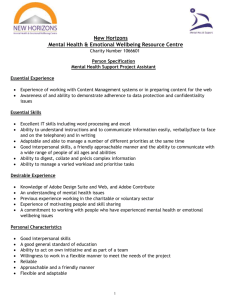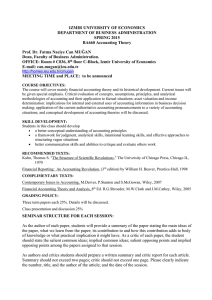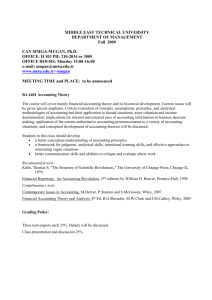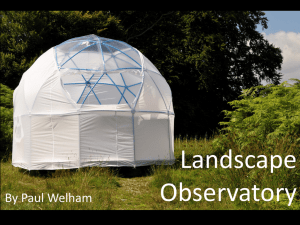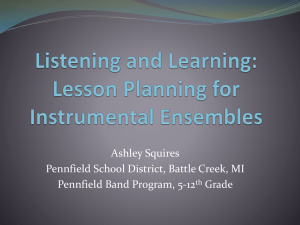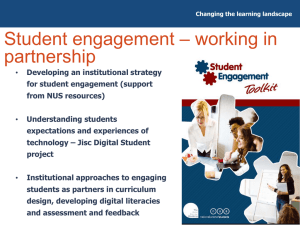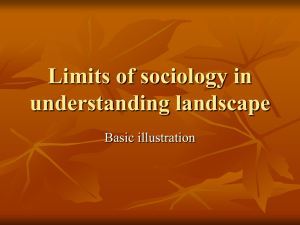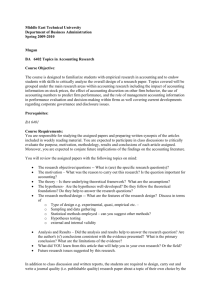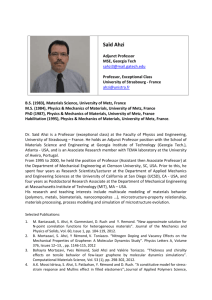PPT
advertisement
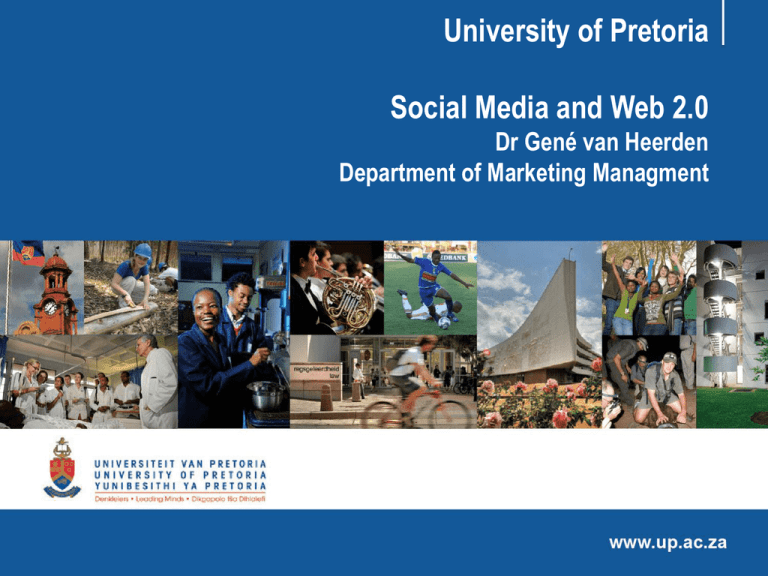
University of Pretoria Social Media and Web 2.0 Dr Gené van Heerden Department of Marketing Managment Structure • • • • • • • Introduction Web 2.0 Social Media – social networking Marketing landscape and social media The consumer Organisations and this space Summary Introduction • • • • • Contemporary societies Information is at the core of these developments Individuals are more connected Technology has changed marketing Environment: Powerful, interactive and collaborative Web 2.0 • Web 1.0 was read only top-down • Web 2.0 is read/write, and bottom up • Collaborative environment created by Web 2.0 Social Media • • • • Peer to peer communication Sharing, creating and discussing information Community “architecture of participation” Instant responses Social Media • Mobile and web-based interactive platforms are used (Kietzmann, Hermkens, McCarthey, & Silvestre, 2011). • User experiences and key functionalities of social media: – – – – – – – Identity - LinkedIn Presence Relationships Conversations Groups Reputations - Facebook Sharing - Youtube Social Networks • Social networks: – a social structure – connected by specific interdependencies – ability to facilitate an abundance of information Social Networks • Transformed marketing communications – – – – – Reach and richness Large numbers of users simultaneously use Vast amounts of information communicated Ability to tailor it Create two-way communication Marketing landscape and Social Media • Challenges loss of power and control of the messages • ‘Collaborative world’ (Hanna, Rohm & Crittenden, 2012). • ‘Dominant social networking culture’ (Parent, Plangger & Bal, 2011). • Consumers expect to actively be a part of the media process ‘consumer experience’ (Hanna et al., 2012) Marketing landscape and Social Media • Traditional pushed-based marketing • Replaced by personal and authentic conversations • Media landscape has changed: – Integrated and mobile – Individuals are at the core and the drivers Marketing landscape and Social Media • A number of questions: – how should we integrate this space effectively – into their marketing activities and – create competitive advantage Who is the consumer? • Individual within communities • Consumers are co-creators (Berthon, Pitt, McCarthy & Kates, 2007) • Conversations create value = market • Content creation • Digital and mobility Organisations and this space • Present and active • Open and flexible • Understanding of the social, economic and technical environment - to understand the activities • Management - Resource implication • Research orientated Summary • Networking – Past, present and platforms • Monitor – Listening, relationship and participate – who is talking about what • Measure – Metrics – change in traditional view • Resources – Time and personnel • Content – Space for co-creation Thank you References • • • • • Berthon, P.R., Pitt, L.F., McCarthy, I. & Kates, S. (2007) “When customers get clever: Managerial approaches to dealing with creative consumers”, Business Horizons, Vol 50(1), pp 39-48 Hanna, R., Rohm, A. & Crittenden, V.L. (2012) “We’re all connected: The power of the social media ecosystem”, Business Horizons, Vol 54, pp 265-273 Kietzmann, J.H., Hermkens, K., McCarthey, I.P. & Silvestre, B.S. (2011) “Social media? Get Serious! Understanding the functional building blocks of social media”, Business Horizons, Vol 54, pp 241-251 Parent, M., Plangger, K. & Bal, A. (2011) “The new WTP: Willingness to participate”, Business Horizons, Vol 54, pp. 219-229 Stewart, D.W. & Pavlou, P.A. (2002) “From Consumer Response to Active Consumer: Measuring the Effectiveness of Interactive Media”, Journal of the Academy of Marketing Science, Vol 30(4), pp 376-396.

